Let’s Treat Ocular Rosacea Type 4: Expert Insights on Natural Home Remedies & Clinical Treatments for Eye Care
Expert Strategies to Treat Ocular Rosacea: Combining Home Remedies with Clinical Approaches
Looking to treat Ocular Rosacea? You’re not alone. Rosacea affects nearly 10% of the world’s population, and between 10-50% of those patients are affected by Ocular Rosacea.1
Ever find your eyes red, irritated, or feeling like you’ve got sand in them… but no beach in sight? There are four different types of Rosacea, but if these are your symptoms, then it might be Ocular Rosacea. Stick with us as we get into the causes, symptoms, and all the soothing remedies that can help you wink Ocular Rosacea goodbye.
From the tried-and-true methods to the cutting-edge treatments on the horizon, we’ll explore all the options available to help you find relief and restore comfort to your eyes.
Embark on a Journey Through the Rosacea Spectrum
Rosacea doesn’t just show up; it makes a grand entrance, presenting itself in four unique forms that can touch lives differently. They can happen individually or you can have multiple types all at the same time. At The Rosacea Method, we’re here to guide you through each type, shedding light on their distinctive traits and the paths to naturally healing your Rosacea, no matter what type you have.
These are the four Types of Rosacea:
 Type 1: Erythematotelangiectatic Rosacea (ETR)
Type 1: Erythematotelangiectatic Rosacea (ETR)
This type paints a vivid picture with its persistent flush or facial redness and delicate network of visible blood vessels, urging an early and gentle response to address what may be going wrong internally.
 Type 2: Papulopustular Rosacea
Type 2: Papulopustular Rosacea
Dive deeper into this subtype, where red, swollen bumps mirror acne but speak a different skin language, signaling a call for a systemic, nurturing approach to heal your skin from the inside out.
 Type 3: Phymatous Rosacea
Type 3: Phymatous Rosacea
With this type, the skin embarks on an unwelcome journey of thickening and scarring, particularly on the nose, urging discernment and early diagnosis to have the best outcome.
 Type 4: Ocular Rosacea
Type 4: Ocular Rosacea
Open your eyes to this subtype, where the dance of redness and irritation unfolds not just on the skin but in the tender arena of the eye, presenting with dryness, grittiness, and swelling of the lids.
Key Points on How to Spot and Treat Ocular Rosacea
Ocular Rosacea, a common eye condition, can manifest in various ways, from eye irritation to visible inflammation. Managing this condition requires a multifaceted approach:
- Diagnosis and Management: Proper diagnosis, often involving a slit lamp eye examination, is key to a tailored management plan for Rosacea patients.
- Home and Medical Treatments: Combining medical treatments like prescriptions for blepharitis with home remedies like natural eye washes offers comprehensive care.
- Lifestyle Adjustments: Identifying triggers is crucial for patients to manage symptoms and find the best way to treat Ocular Rosacea effectively.
- Research and Development: Emerging research promises innovative new ways to treat Ocular Rosacea, enhancing future management strategies.
- Professional Guidance: Regular check-ups with eye care specialists are essential for patients to navigate treatment options and prevent eye problems related to Rosacea.
For individuals grappling with Ocular Rosacea, staying abreast of the latest research and maintaining open.
Ocular Rosacea Unveiled: From Flares to Care
If you’re wrestling with more than just a rosy glow and your eyes are giving you grief, it might be Ocular Rosacea stepping into the ring. While other types of Rosacea have symptoms like red cheeks, Ocular Rosacea is more than just a skin condition affecting the face. It can seriously impact the eyes, leading to discomfort and vision problems.2
Beyond the usual red-faced suspects, this skin challenge throws a curveball straight to your peepers, sometimes mimicking other pesky guests like conjunctivitis or styes. Commonly known as Meibomian Gland Dysfunction, or MGD for short, this chronic tag-team affects your eyes (and sometimes skin) with symptoms that can cramp your style, similar to hordeola (styes).
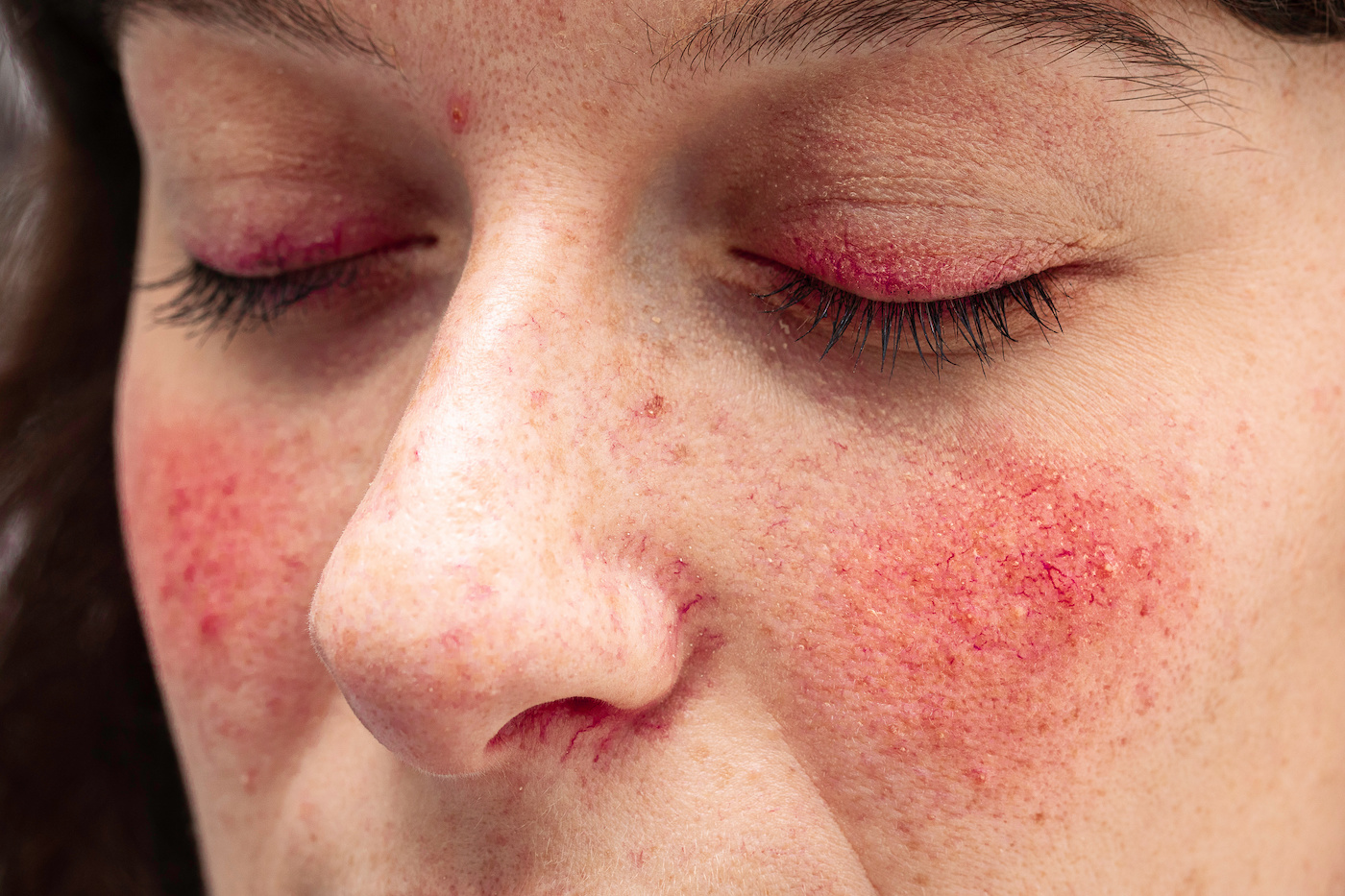
But don’t throw in the towel just yet! There are various options available for the best treatment for OR (Ocular Rosacea), including Ocular Rosacea natural treatments that many people find beneficial.
Warm compresses, antibiotics, and eye drops are the go-to strategies for relief, while advanced moves like laser therapy zoom in on those stubborn symptoms. However, in the past few years, there’s been a tremendous shift in the Ocular Rosacea dialog, with practitioners finally recognizing demodex mites and the role they play in all subtypes of Rosacea.
Quick tip: Always consult a healthcare professional for the best advice on keeping your eyes bright and healthy!
communication with healthcare providers can significantly improve condition outcomes and quality of life.
What’s Ocular Rosacea Anyway?
Ocular Rosacea is an inflammatory condition and an extension of the skin condition Rosacea that affects the eyes, leading to symptoms like:
- redness
- burning
- itchiness
- watering
- sensitivity to wind or blowing air
- irritation or the feeling like you have sand in your eyes
- sensitivity to light
- swelling of the eyelid
- recurrent eye infections or styes
- dryness3
It often accompanies the more familiar facial signs of Rosacea but can also occur on its own. Understanding its connection to facial Rosacea and the factors that exacerbate it is crucial for effective management.
If your eyes are feeling as fiery and itchy as a jalapeño pepper, you might be experiencing Ocular Rosacea. This condition is inflammation that causes redness, burning, and itching of the eyes, and it often develops in people who already have Rosacea.
Ocular Rosacea can also be the first sign of developing facial Rosacea, often overlapping with skin symptoms. It primarily affects adults between the ages of 30 and 50.
While there are traditional medical treatments available, like doxycycline for ocular rosacea treatment and topical eye steroids, these treatments will only help to manage the condition but will not help address the root cause. Some patients have success with a comprehensive, holistic approach that addresses both facial Rosacea and Ocular Rosacea by reducing the inflammatory levels of the body. Another treatment to consider is demodex mites and the role they play in both OR and facial Rosacea. However, it’s always best to consult with a healthcare professional to decide which approach may be best for you.
How Can You Tell if You Have Ocular Rosacea?
Got that gritty, eye-rubbing feeling or look like you’ve cried over a sad movie marathon? We’ll share some tell-tale signs that your eyes might be dealing with more than just a bad day.
Diagnosing Ocular Rosacea in a clinic involves looking for common symptoms such as persistent eye redness, dryness, erythema, and the sensation of having something in your eye, which could sometimes be an allergy manifestation. We’ll discuss the signs to watch for and when to seek a professional diagnosis.
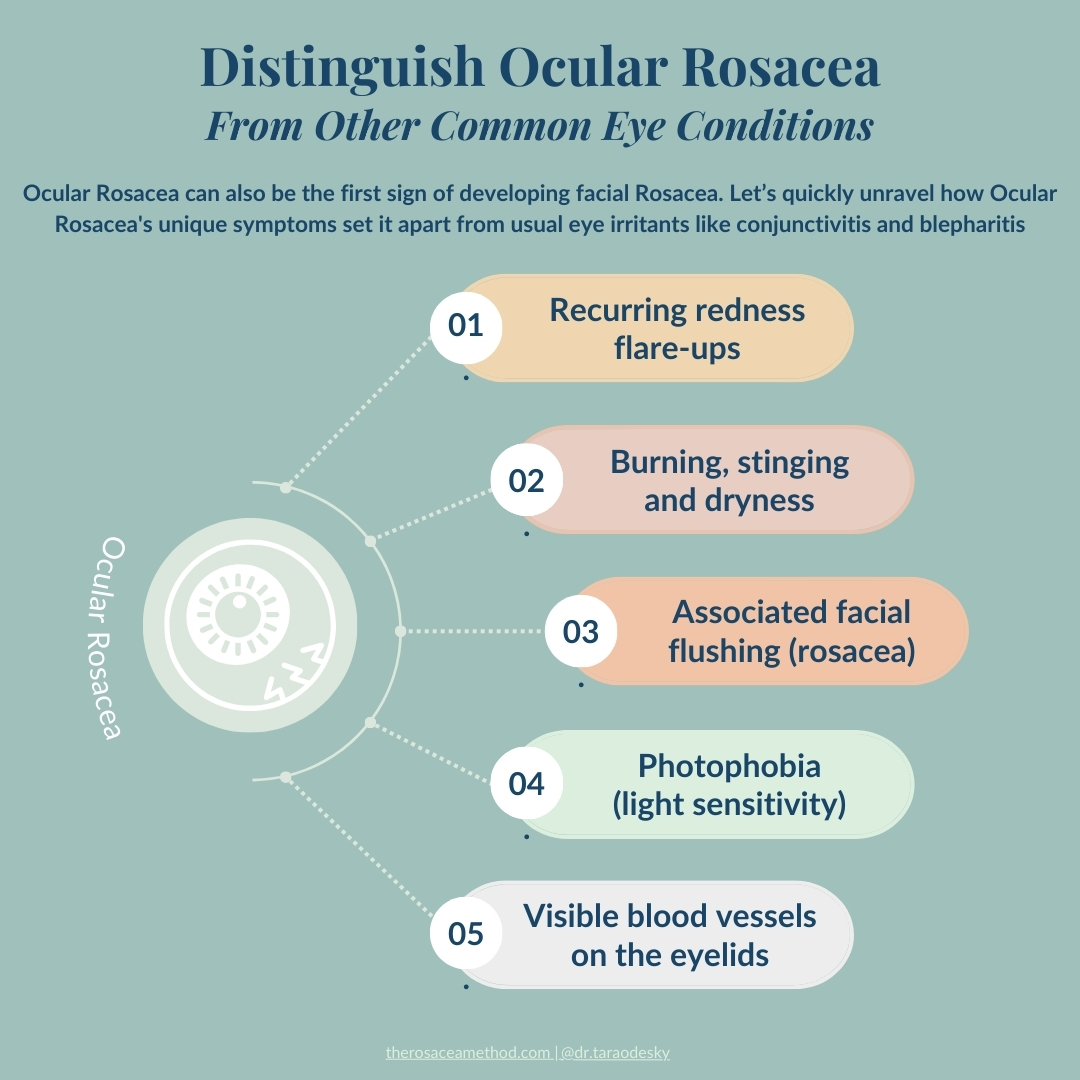
Feeling like your eyes are on fire and itching like crazy? Do the symptoms seem even worse upon waking? You might just be experiencing the not-so-pleasant world of Ocular Rosacea symptoms. But how can you tell if what you’re experiencing is actually Ocular Rosacea? Here are four telltale signs to look out for:
- Red, burning, itchy, or watering eyes: If your eyes are constantly red and feel like they’re on fire, it could be a sign of Ocular Rosacea. The itching and watering are also common symptoms.
- Dry eyes and a feeling of grittiness: Do your eyes constantly feel dry and gritty, like there’s something stuck in them? This could be a sign of Ocular Rosacea. It’s like having sand in your eyes, and it’s often worse in the morning.
- Blurred vision and sensitivity to light: If your vision is slightly blurry and you find yourself squinting in bright light, it could be a symptom of Ocular Rosacea, in some cases affecting the cornea.
- Recurrent eye or eyelid infections: If you’re constantly battling eye or eyelid infections, such as frequent styles or pink eye, it could be a sign of Ocular Rosacea. These infections can be painful and make your eyes even more uncomfortable.
If you’re experiencing any of these symptoms, it’s important to see a doctor for a proper evaluation and options to treat Ocular Rosacea. Don’t suffer in silence, get the help you need to soothe those fiery eyes!
The Mysterious Factors Behind Ocular Rosacea
While the exact cause of Ocular Rosacea remains a mystery, several factors, including genetics, environmental triggers, lifestyle choices, and possibly even conditions like lupus, can play a role.4
One possible cause of Ocular Rosacea is Demodex Mites. These little critters can wreak havoc on your eyes and skin, causing redness, itching, and all sorts of discomfort.
Demodex Eyelid Mites
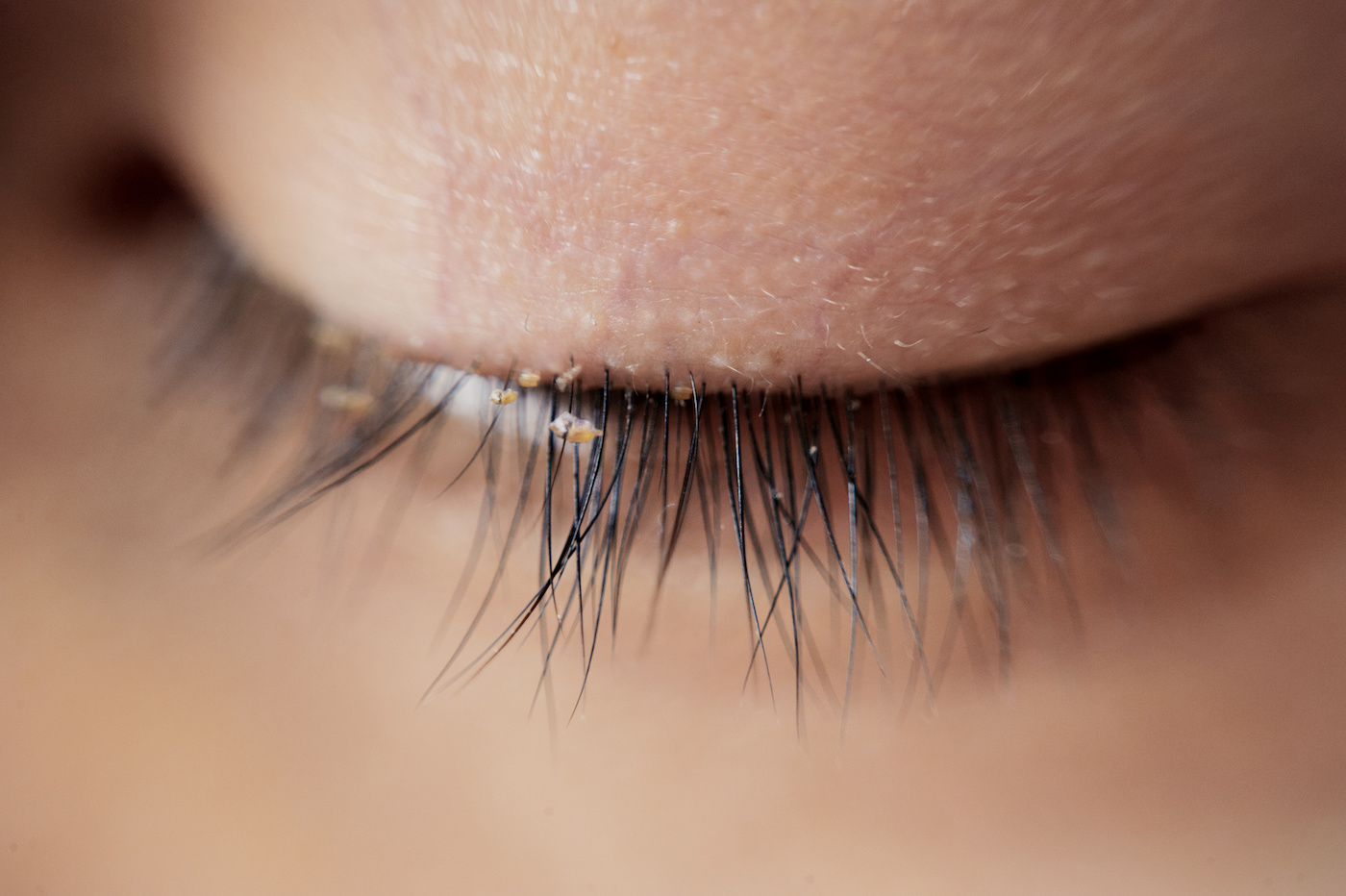
Blepharitis, or inflammation of the eyelid, can often accompany Rosacea and the reason is often the same as to why the Rosacea is occurring: Demodex Mites.
Demodex eyelid Mites, those microscopic creatures that call our faces home, have been causing quite a stir in the world of Ocular Rosacea. But don’t be alarmed… these mites live on ALL human skin. People with rosacea just tend to react more to them (almost like an allergic reaction!) These little critters may not be causing Rosacea, but they can definitely complicate things. These mites prefer to burrow in the pores of your face and the follicles of your eyelashes. If you have rosacea, you may be particularly sensitive to these mites, so you’ll definitely want to consider your treatment options.
So, if you’re dealing with Ocular Rosacea, here’s what you need to know about Demodex eyelid Mites:
- They can cause red dots or bumps, a sandpaper feel to the skin, and that creepy sensation of something crawling on your face at night.
- Treating Demodex Mites on the skin involves both natural and prescription options like sulfur and ivermectin. Since mites are active at night, it’s best to apply these topically just before bed at on clean, moisturized skin.
- These treatments are sometimes helpful but other times, a temporary worsening of symptoms can occur, often prompting patients to stop treatment. Treatments are usually helpful after 4 months, but if you don’t address your internal inflammation, you’ll need to keep up with these topicals for life.
Getting to the Bottom of It:
Clinical Diagnosis of Ocular Rosacea
Initiate your path to understanding with a precise diagnosis of Ocular Rosacea.
In order for your eye doctor to meticulously search for signs of this condition, they will start your diagnosis by examining your eyes, eyelids, eyelashes and skin. Since OR is often misdiagnosed and confused with other eye related medical conditions, it’s critical that this diagnosis come from a licensed eye doctor.
Some common ocular conditions that can mimic rosacea are: pink eye, Botox reaction, chalazion, dry eye disease, blepharitis, allergic reaction to false eyelashes, atopic dermatitis, and several other conditions.
Treat Ocular Rosacea
- Use ‘artificial tears’ to help maintain your eye’s moisture. (Don’t use eye drops for bloodshot eyes; they can worsen Ocular Rosacea symptoms)
- Remove artificial eyelashes, and don’t use them if you have any form of Rosacea. The glues are very toxic to the eyes and can even cause permanent eye disease.
- Use only CLEAN brands of eye makeup that have been third-party tested for mercury and asbestos. These can be very irritating to sensitive eyes.
- Switch your laundry detergent to a fragrance-free, allergen-free brand and use 100% organic cotton pillowcases.
- Maintain your eyelid hygiene by cleansing gently with a washcloth or a specialized eye-cleaning product such as Ocusoft Oust. Follow your medical provider’s recommendations for applying warm compresses to your closed eyes.
- Prescription eye drops and ointments can help you alleviate your swelling and redness.
How to Treat Ocular Rosacea Naturally for Effective Management
From antibiotics to home remedies, there are several ways to treat Ocular Rosacea. We’ll cover the most common treatments prescribed by doctors and alternative and supportive therapies that can help alleviate symptoms.
To effectively manage Ocular Rosacea, exploring alternative treatment options can be beneficial, especially when considering natural treatments for all types of Rosacea. These natural treatments can provide relief and support effective management of the condition by considering Rosacea Triggers and taking steps to reverse Rosacea from the inside out.
Here are four natural options to consider:
 Home Remedies: Incorporating certain home remedies into your daily routine can help soothe your eyes and reduce inflammation. Applying green tea compresses to your eyelids can provide direct relief while changing makeup and skincare to clean brands can reduce your risk of an allergic reaction to unnecessary colors, chemicals or fragrances.
Home Remedies: Incorporating certain home remedies into your daily routine can help soothe your eyes and reduce inflammation. Applying green tea compresses to your eyelids can provide direct relief while changing makeup and skincare to clean brands can reduce your risk of an allergic reaction to unnecessary colors, chemicals or fragrances.
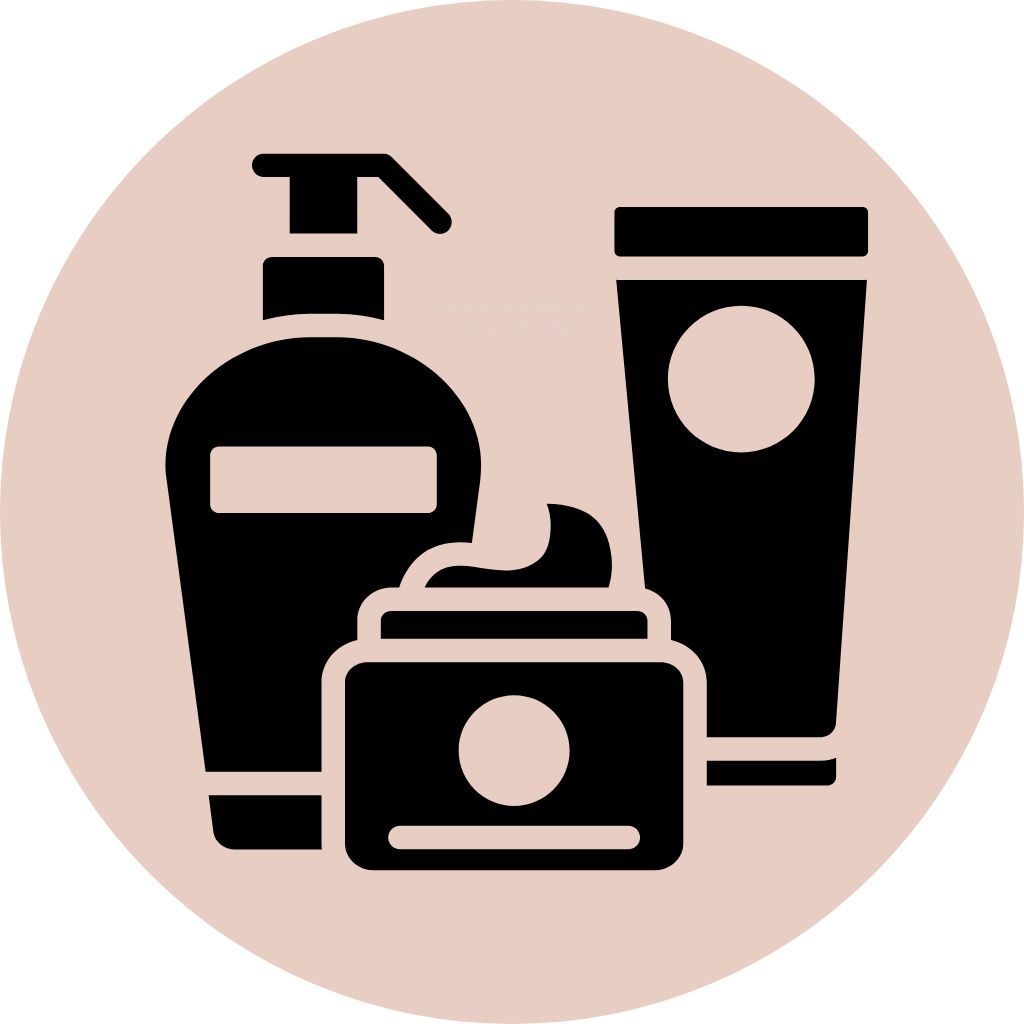 Topical Treatments: Several topical treatments are available that can help alleviate symptoms of Ocular Rosacea. Look for creams or ointments containing natural ingredients like aloe vera, chamomile, or green tea extract, which have anti-inflammatory properties and can help calm irritated eyes.
Topical Treatments: Several topical treatments are available that can help alleviate symptoms of Ocular Rosacea. Look for creams or ointments containing natural ingredients like aloe vera, chamomile, or green tea extract, which have anti-inflammatory properties and can help calm irritated eyes.
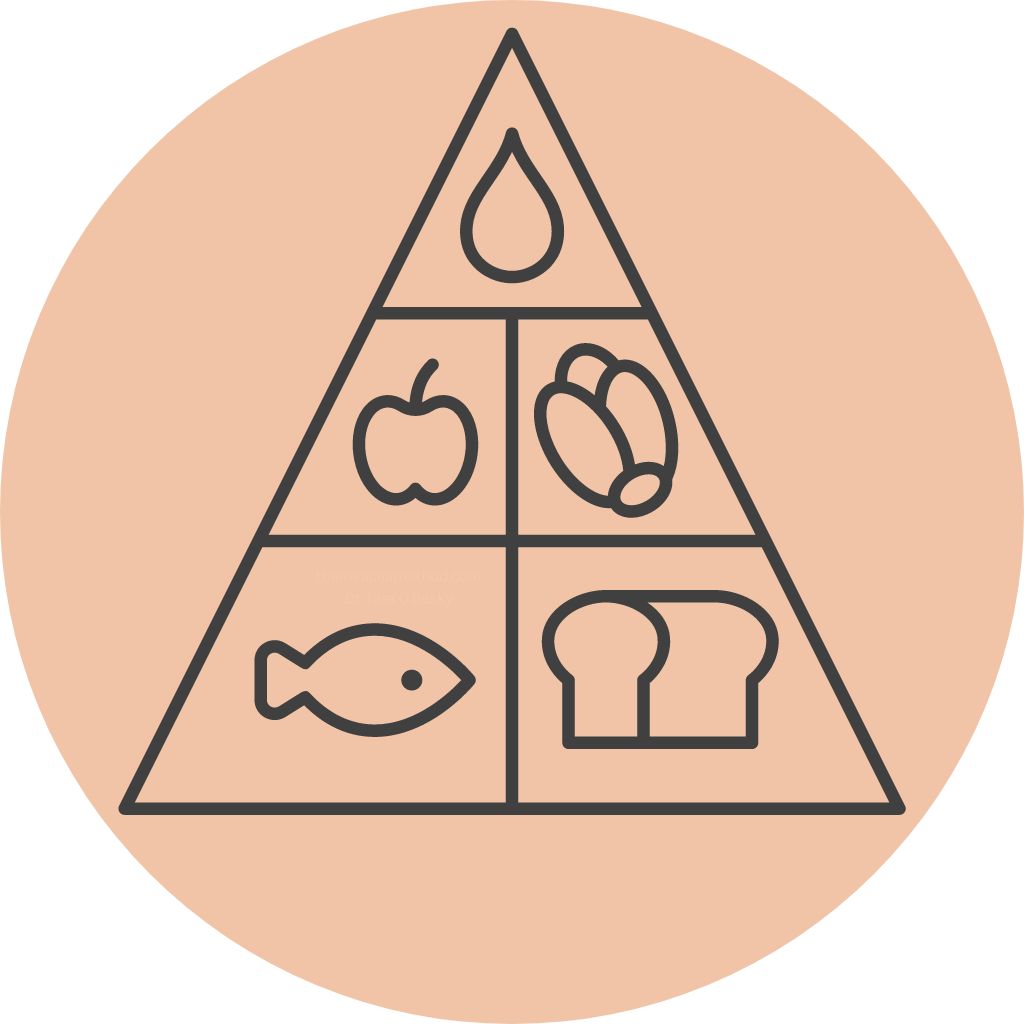 Dietary Changes: Making changes to your Rosacea Diet can also have a positive impact on Ocular Rosacea symptoms. Avoiding trigger foods like alcohol, caffeine, and spicy foods, and focusing on a gut healing diet rich in fruits, vegetables, and omega-3 fatty acids can help reduce inflammation and improve overall eye health.5
Dietary Changes: Making changes to your Rosacea Diet can also have a positive impact on Ocular Rosacea symptoms. Avoiding trigger foods like alcohol, caffeine, and spicy foods, and focusing on a gut healing diet rich in fruits, vegetables, and omega-3 fatty acids can help reduce inflammation and improve overall eye health.5
 Stress Management: Stress can worsen Ocular Rosacea symptoms, so finding effective ways to manage stress is crucial. Incorporate relaxation techniques such as deep breathing exercises, meditation, or yoga into your daily routine to help reduce stress levels and improve overall well-being.
Stress Management: Stress can worsen Ocular Rosacea symptoms, so finding effective ways to manage stress is crucial. Incorporate relaxation techniques such as deep breathing exercises, meditation, or yoga into your daily routine to help reduce stress levels and improve overall well-being.
While natural management to treat ocular rosacea can be effective, it’s important to consult with a healthcare professional before starting any new treatment regimen. They can provide guidance and tailor a treatment plan that best suits your individual needs.
DIY Home Remedies and Lifestyle Changes
So you’ve tried to treat Ocular Rosacea medically, but you’re still looking for some DIY remedies and lifestyle changes to help manage your symptoms?
Well, you’re in luck! Let’s explore how your diet can play a role in Ocular Rosacea and what changes you can make to potentially improve your eye health.
Get ready to spice up your life, or maybe, tone it down a bit. Let’s find out!
Food for Thought… And Your Eyes:
The Impact of Diet on Ocular Rosacea
Caring for Your Vision: Diet’s Role to Manage and Treat Ocular Rosacea
In the journey to deal with Ocular Rosacea, what we eat plays a pivotal role—after all, our eyes reflect our overall health. A Rosacea Diet can combat triggers and nourish the body to tame inflammation naturally.6
Food is Medicine! One step to easing Ocular Rosacea is that the right foods act as the best treatment, reducing systemic inflammation, preventing allergic reactions and calming irritation.
- Gut-First Approach: Embracing a diet that boosts gut health and Rosacea healing is crucial for Ocular Rosacea management. A happy gut means less inflammation and much happier eyes!
- Anti-Inflammatory Choices: Fill your plate with anti-inflammatory heroes like omega-3-rich wild-caught fish, authentic olive oil, and vibrant berries to reduce overall inflammation and Ocular Rosacea symptoms.
- Stay Hydrated: Keep those eyes relieved and skin glowing by drinking plenty of purified water, a simple yet effective step for Ocular Rosacea care. (Make sure your water is filtered and fluoride free!)
- Toxin Awareness: Clean up your toxic makeup, skincare, and laundry essentials! There are plenty of clean brands that don’t contain harsh chemicals, colors, or fragrances, which can be major Rosacea triggers.
- Holistic Remedies: Explore Ocular Rosacea homeopathic treatments such as green tea compresses for comfort—nature’s way of soothing your eyes.
Incorporate these tips consistently over time for a comprehensive, natural approach to managing Ocular Rosacea, keeping your eyes’ health and comfort in focus.
And while natural remedies are at the heart of The Rosacea Method, conventional treatments can be discussed with your eye doctor when your condition demands it. Don’t forget to have a conversation with your eye doctor about demodex mites- these are often a big piece of Ocular Rosacea and natural topical treatment can be very effective for some!
When to See an Eye Doctor
Knowing when to seek medical advice is crucial in managing Ocular Rosacea effectively. If you suspect that you may have Ocular Rosacea, it’s crucial to seek medical attention promptly to receive an accurate diagnosis to treat Ocular Rosacea appropriately.
While self-diagnosing can be tempting (thanks, Dr. Google), it’s always best to consult with an eye doctor who can evaluate your symptoms and provide expert guidance. But how do you know when it’s time to make that doctor’s appointment? Here are some signs that indicate it’s time to put on your fancy eyeglasses and pay a visit to the doc:
- Persistent eye redness
- Irritation and dryness
- Blurry or double-vision
- Eye pain or discomfort
- Swollen or drooping eyelids
- Changes in vision or headaches from reading
When discussing treatment options with your healthcare provider in a clinic, it’s crucial to have full disclosure about your medical history and any potential financial considerations, especially when considering treatments like beta blockers or other medications that could have adverse effects.
Managing Ocular Rosacea Flare-Ups Long-Term
Living with Ocular Rosacea requires understanding how to manage the condition over time. We’ll talk about strategies for long-term care and keeping symptoms at bay.
To effectively manage Ocular Rosacea flare-ups long-term, it’s important to implement a comprehensive treatment plan that addresses both the symptoms and underlying causes of the condition. Here are some strategies that can help you manage your Ocular Rosacea and minimize flare-ups:
- Follow a consistent, basic skincare routine: Cleanse your face with a gentle cleanser and moisturize regularly to keep your skin hydrated and reduce irritation. Avoid scrubs and exfoliants at all costs.
- Protect your eyes from irritants: Avoid rubbing your eyes and protect them from wind, dust, and sunlight by wearing sunglasses and using artificial tears to keep your eyes moist.
- Manage triggers: Identify and avoid triggers that worsen your Ocular Rosacea symptoms. These may include alcohol, smoke, extreme temperatures, and harsh skincare products.
- Seek professional guidance: Consult with medical professionals such as an ophthalmologist who specializes in Ocular Rosacea to develop an individualized treatment plan, to alleviate symptoms and reduce eye inflammation.
Peeking into the Future:
Ocular Rosacea Medications & New Treatments on the Horizon
With ongoing research and advances in ophthalmology, the future looks promising for those with Ocular Rosacea. As researchers continue to explore ways to alleviate the symptoms of this condition, several potential new options to treat Ocular Rosacea are currently being investigated:
- Nanoparticles
- Gene Therapy
- Stem Cell Therapy
- Immunomodulators
- Neurostimulation
- Demodex Mite Treatment
As researchers continue to explore these options, the future looks bright for those living with Ocular Rosacea. Stay tuned for more advancements on the horizon!
How Can YOU Treat Ocular Rosacea Symptoms Yourself?
You’re never alone in the fight against Ocular Rosacea, especially when relief can easily be within reach.
By exploring and learning about healing Rosacea from the inside out, you can treat ocular rosacea and alleviate your symptoms to prevent any further complications with your Rosacea!
Whether it be lifestyle changes, implementing a Rosacea Diet, or just simply knowing what to avoid, Rosacea Specialist Dr. Tara O’Desky’s got you covered! Dr. Tara created this super easy-to-follow plan to help you take back control and feel confident regardless of how severe your Rosacea might be.
And what’s better is that this program can help you put your rosacea into remission naturally, without any prescription medications or expensive doctor visits!
So, let’s dive in and reclaim your confidence.
Your rosacea remission starts now. Together, we’ll conquer whatever Rosacea has to throw at you!
FAQs on How to Treat Ocular Rosacea
How do you treat Ocular Rosacea naturally?
To naturally treat Ocular Rosacea, consider using Ocusoft Oust Demodex eye foam after consulting with an eye doctor. Focus on reducing systemic inflammation with dietary adjustments and anti-inflammatory foods. Always seek advice from a healthcare professional before starting any new regimen.
What is the root cause of Ocular Rosacea?
The root cause of Ocular Rosacea remains elusive, but it’s generally believed to be a multifactorial condition involving genetic and environmental factors, with a strong link to gut health and systemic inflammation. Addressing gut microbiota imbalances and nutrient deficiencies may be crucial for effective management.
Can Ocular Rosacea be permanently reversed?
Dr. Tara O’Desky was able to naturally reverse her OR symptoms in 2020, and it has not returned. She healed internally by prioritizing gut health, eliminating inflammatory foods like dairy and gluten, using probiotics, and maintaining toxin free eye and skin care routines to prevent allergic reactions.
How to treat Ocular Rosacea of the eyes?
Addressing Rosacea in the eyes holistically involves focusing on gut health, adopting an anti-inflammatory diet, using soothing natural eye remedies for the eyes, and maintaining eyelid hygiene. Reducing use of false eyelashes, harsh exfoliants and makeup containing heavy metals can greatly reduce symptoms.
What is the new treatment for Ocular Rosacea?
New treatments for Ocular Rosacea may involve prescriptions and Demodex mite treatments. Integrating these with holistic strategies offers a comprehensive approach to thorough and effective ways to treat Ocular Rosacea.
What is the best medicine for Ocular Rosacea?
While treatments like metronidazole gel, doxycycline, and steroid eye drops are common, the most effective approach might combine these with lifestyle and dietary changes focusing on gut health, demodex mite treatment and stress management. A comprehensive exam by an eye doctor is essential to customize the best treatment plan.
What are the causes of Ocular Rosacea?
Ocular Rosacea’s causes include inflammation, bacteria, blepharitis, demodex mites, autoimmune responses, and eyelid margin abnormalities intertwined with systemic factors like gut health and immune function. Holistically addressing these underlying issues offers a comprehensive management approach.
What are the common eye symptoms associated with Ocular Rosacea?
Some common Ocular Rosacea eye symptoms of Ocular Rosacea include dry eye syndrome, redness, itching, light sensitivity, sandy feeling, blurry vision and increased irritation upon waking.
How do you treat Ocular Rosacea?
To treat Ocular Rosacea, a combination of different approaches may be used, including artificial tears, maintaining clean lid margins, skincare modifications, and, addressing Rosacea as a whole with holistic methods.
What is the best treatment option for Ocular Rosacea?
The best treatment option for Ocular Rosacea varies depending on the severity of the condition, but it often includes a combination of lid hygiene, artificial tears, and demodex mite treatment tailored to the individual’s condition severity.
What is the connection between Ocular Rosacea and dry eye disease?
Ocular Rosacea is commonly associated with dry eye disease due to the inflammation of the oil glands in the eyelids, leading to evaporative dry eye and related symptoms.
How can I effectively manage the eye symptoms of Ocular Rosacea?
Eye symptoms management of ocular rosacea involves regular visits to an eye doctor, following a proper treatment plan, and using artificial tears as the eye care professional deems necessary.
Is there a link between helicobacter pylori bacteria and Ocular Rosacea?
Some studies suggest a potential association between helicobacter pylori (h.pylori) bacteria and Ocular Rosacea, but more research is needed to confirm this link.
References:
- Rodrigues-Braz D, Zhao M, Yesilirmak N, Aractingi S, Behar-Cohen F, Bourges JL. Cutaneous and ocular rosacea: Common and specific physiopathogenic mechanisms and study models. Mol Vis. 2021 May 13;27:323-353. PMID: 34035646; PMCID: PMC8131178. ↩︎
- Rodrigues-Braz D, Zhao M, Yesilirmak N, Aractingi S, Behar-Cohen F, Bourges JL. Cutaneous and ocular rosacea: Common and specific physiopathogenic mechanisms and study models. Mol Vis. 2021 May 13;27:323-353. PMID: 34035646; PMCID: PMC8131178. ↩︎
- Al-Balbeesi AO, Almukhadeb EA, Halawani MR, Bin Saif GA, Al Mansouri SM. Manifestations of ocular rosacea in females with dark skin types. Saudi J Ophthalmol. 2019 Apr-Jun;33(2):135-141. doi: 10.1016/j.sjopt.2019.01.006. Epub 2019 Jan 29. PMID: 31384155; PMCID: PMC6664278. ↩︎
- Kılıç Müftüoğlu İ, Aydın Akova Y. Clinical Findings, Follow-up and Treatment Results in Patients with Ocular Rosacea. Turk J Ophthalmol. 2016 Jan;46(1):1-6. doi: 10.4274/tjo.48902. Epub 2016 Jan 5. PMID: 27800249; PMCID: PMC5076302. ↩︎
- Weiss E, Katta R. Diet and rosacea: the role of dietary change in the management of rosacea. Dermatol Pract Concept. 2017 Oct 31;7(4):31-37. doi: 10.5826/dpc.0704a08. PMID: 29214107; PMCID: PMC5718124. ↩︎
- Weiss E, Katta R. Diet and rosacea: the role of dietary change in the management of rosacea. Dermatol Pract Concept. 2017 Oct 31;7(4):31-37. doi: 10.5826/dpc.0704a08. PMID: 29214107; PMCID: PMC5718124. ↩︎
MEDICAL DISCLAIMER
This content is for informational and educational purposes only. It is not intended to provide medical advice or to take the place of such advice or treatment from a personal physician. All readers/viewers of this content are advised to consult their doctors or qualified health professionals regarding specific health questions. Neither Dr. Tara O’Desky nor the publisher of this content takes responsibility for possible health consequences of any person or persons reading or following the information in this educational content. All viewers of this content, especially those taking prescription or over-the-counter medications, should consult their physicians before beginning any nutrition, supplement or lifestyle program.
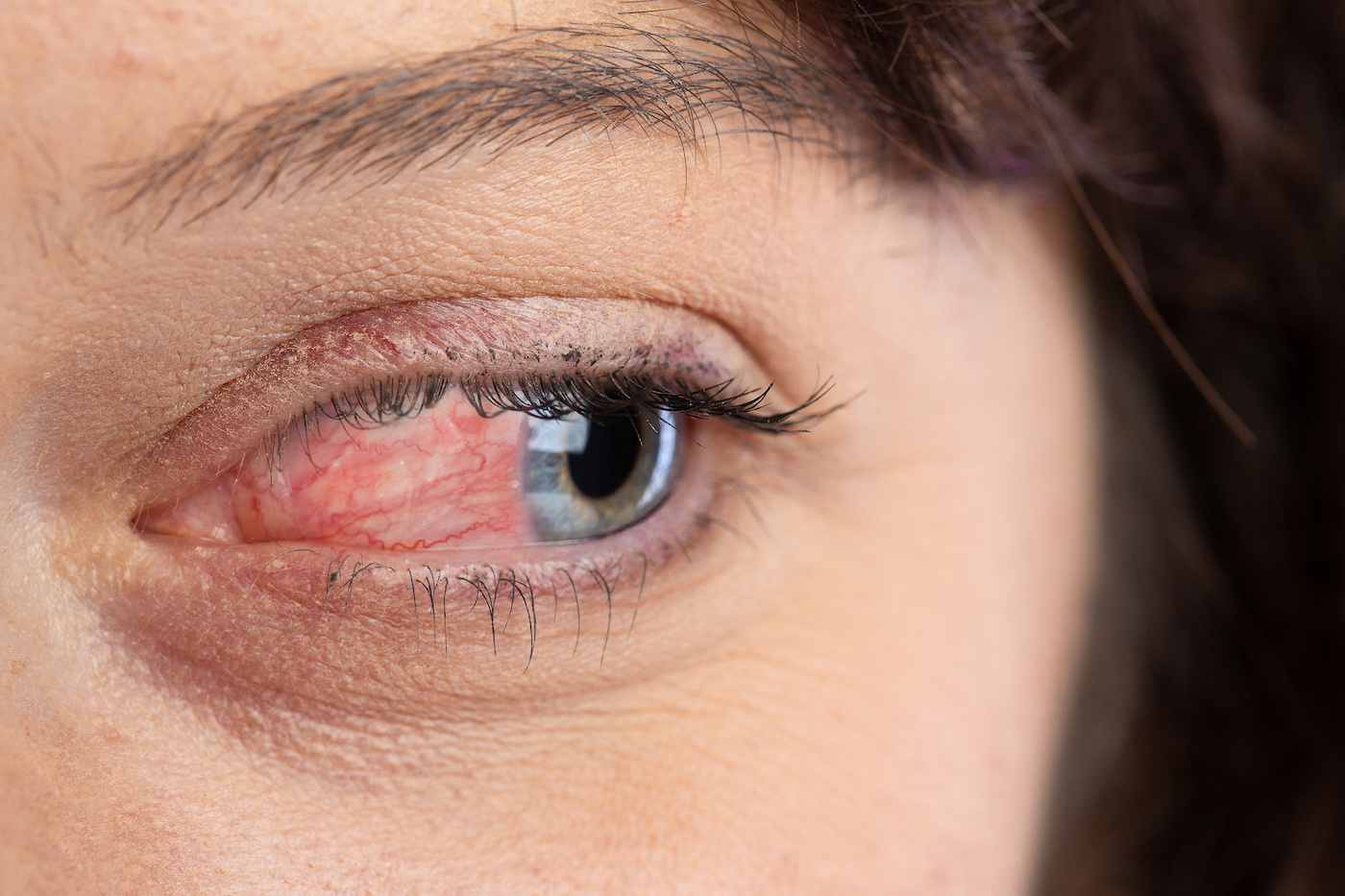
Leave a Reply
Learn More About Me
20 years of rosacea
- rosacea
- chronic skin issues
- gut issues
- food sensitivities
- inflammatory conditions
After 20 years of ineffective treatments and medications, Dr. O'Desky reversed her rosacea 100% through dietary changes and food-based medicine.
Health Coach & Holistic Skin Expert
Meet
Dr. Tara O'Desky
Since developing her own holistic healing program,
The Rosacea Method, she has helped countless patients of all ages with:
- rosacea
- chronic skin issues
- gut health
- food sensitivities
- inflammatory conditions
Dr. O'Desky continues to see patients in private practice in the USA and also sees clients via Telehealth. She currently offers various programs and workshops for people all over the world dealing with chronic health issues, poor gut health, and rosacea.
Health Coach and Holistic Skin Expert
Meet Dr. Tara O'Desky
-L. M.
"I want to say thank you so much for the program!
I never feel hungry anymore. My diet has opened up a ton and I feel really healthy and excited learning that there’s so many things I can eat now that are healthy and tasty. I felt good through the entire cleanse and my skin has definitely improved."
-Anonymous
"I felt so hopeless and I could not see light at the end of the tunnel. Now I have hope again and I feel more positive about my situation overall! Yes it can definitely heal, I have so so sure others heal! This program is great, I feel like It covers everything! Thank you! "
-Darlene B
"For the first time in 6 years, I feel like I have been given a clear direction to go in that will actually heal my skin. There's so much guess work that comes along with skin complications and Tara helps to clear all that up.Recommend 1000%."



 Type 4: Ocular Rosacea
Type 4: Ocular Rosacea
Thank you for helping me understand what has been so difficult and frustrating for me. Rosacea really effects my self esteem in such a negative way.
I agree! Don’t give up! There is SO Much you can do.
I completely understand. Don’t give up! My program has helped thousands of people like you reverse rosacea!
A very informative post – thank you for providing this helpful advice.
You’re very welcome!